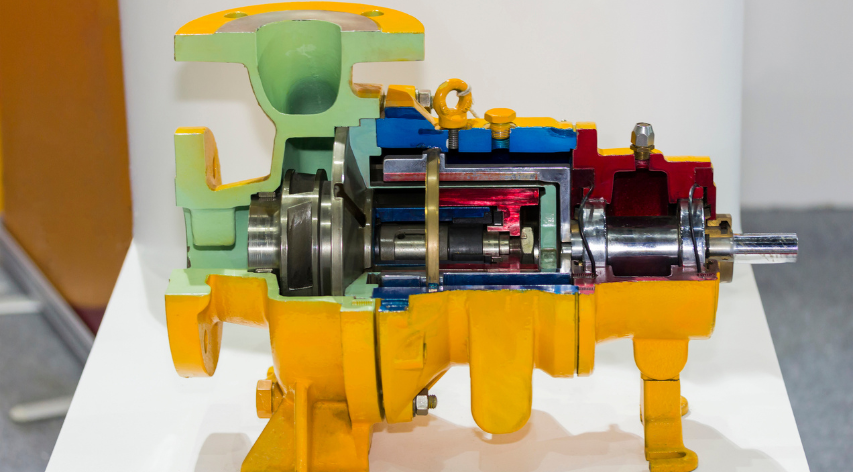Integrity Operating Windows (IOWs), a Key Piece to Your Integrity Program, But Where Else Should They Be Integrated?


Integrity Operating Windows (IOWs) are a key component of a world class mechanical integrity program.
IOWs are not a new concept, as they have been around in different forms for many years. However, with the publication of the first edition of API RP 584, Integrity Operating Windows, in 2014 and the more recent first edition of API 970, Corrosion Control Documents, in 2018, more focus has been placed on these limits within the refining industry.
IOWs can be defined as established limits for process parameters that affect the integrity of equipment and piping when operations deviate from these limits. API 584 defines IOWs in three categories:
-
- Critical – Parameters where rapid deterioration occurs when the limit is exceeded (typically hours to days)
- Standard – Parameter where exceedances over a specified period of time will cause increased degradation (typically weeks to months or within a turnaround interval)
- Informational – Parameters monitored for long-term damage mechanisms
While setting these limits for a given process requires significant effort and technical knowledge, the effort to integrate IOWs into other facility work processes beyond the impact to the inspection program where limits have been exceeded, is often overlooked. The examples below focus on Process Safety Management (PSM) systems where IOWs should also be integrated.
- Management of Change (MOC) process
- The MOC process is used at PSM-covered facilities to document significant changes and to assess the impact of those changes.
- Once IOW limits are determined, any changes to the critical limits should be reviewed within the site’s MOC process
- Additionally, best practices also include a review of ALL proposed changes that may impact existing IOW limits.
- Process Hazard Analysis (PHA) process
- The PHA process is used at PSM-covered facilities for a formal assessment of hazards associated with an operating process.
- PHA reviews are required by PSM regulation to be reevaluated at least every 5 years.
- The existing set of IOWs should be reviewed during the PHA to ensure that the necessary limits are covered, specifically if they are covered by OSHA 1910.119(d)(2)(i)(D) on process safety information which requires establishing “Safe upper and lower limits for such items as temperatures, pressures, flows or compositions”.
- Additionally, a review of exceedances of IOWs since the last PHA also aids in noting areas of vulnerability
- Operating Procedures
- Operating procedures are developed to ensure safe and consistent operation of process units.
- For critical and standard IOW limits requiring operator intervention, IOW limits and descriptions should be integrated directly into the operating procedures. Examples would include:
- Heater tube temperature limits
- Washing to remove process fluids prior to steam out
- Maintenance Procedures
- Similarly, maintenance procedures are required to reduce risk during routine or non-routine maintenance tasks
- IOWs associated with maintenance, downtime, or unit shutdowns should be included in maintenance procedures. Examples would include:
- Downtime protection for stainless steels (neutralization for PTA, N2 purges, etc.)
- Unit start-up limits such as refractory drying rates, minimum pressurization temperatures, equipment heat up rates, etc.
- Inspection Programs
- Inspection programs are an integral part of the Mechanical Integrity requirement within PSM regulations. Inspection programs ensure that equipment and piping are in good condition for continued operation.
- There are numerous instances where IOWs interface with different aspects of a site’s inspection programs. Below are a few of the most common examples
- Outage planning – review of IOW exceedances can help determine the expected amount of damage in an equipment item prior to an outage. Expected repairs can also be estimated.
- Risk-based Inspection (RBI) – RBI programs are used to plan inspections based on risk assessments instead of time intervals. RBI programs typically use static values for damage assessments. IOWs ensure that the damage assessments are still valid.
- Material upgrades – reviews of IOW exceedance can identify areas were existing materials are not suitable for the current operation and can recommend upgraded materials for new limits.
Becht Engineering’s Pono Division is highly experienced in development and implementation of IOW programs. Becht Engineering has the industry leading group of Metallurgical/Corrosion experts who have over 300 years of combined experience within industry, mainly as owner-users. Additionally, our group of mechanical integrity experts have implemented IOW programs at the site and corporate level of many different companies. Our insight on the link between integrity operating windows, damage mechanisms, and process safety management makes Becht uniquely qualified to provide insight in this area.
If you wish to contact the author with a question or comment, you may do so at the bottom of this article.
To request information from Becht’s Corrosion and Metallurgy group, please click below:






